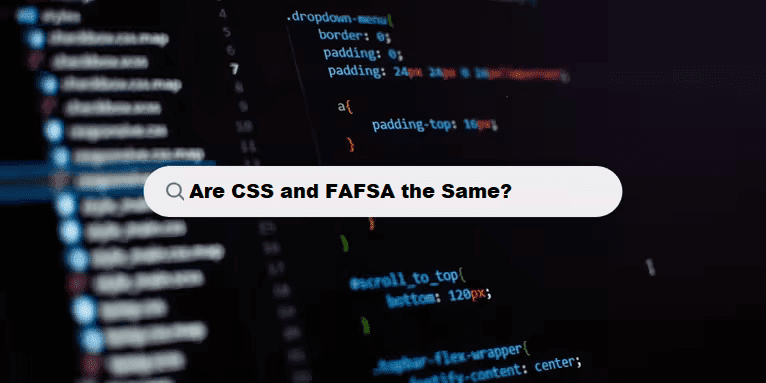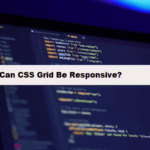In terms of financing college, most students and their families get confused with the numerous forms they have to fill out. The two most popular financial aid applications are the CSS Profile and the FAFSA. They both help determine a student’s eligibility for financial assistance, but they serve different purposes and are used by different institutions. This article will clarify differences between CSS and FAFSA, and will provide examples and explanations to help you understand each form.
1. What is FAFSA?
Free Application for Federal Student Aid, commonly referred to as FAFSA, is a government form that all students must submit if they wish to receive federal financial aid. These may include grants, work-study, and federal student loans. It is the most widely used form for financial aid applications.
Important Points About FAFSA
- Applied for Federal Aid: FAFSA is needed to qualify for federal financial aid.
- Eligibility: It is open to U.S. citizens, permanent residents, and some eligible non-citizens.
- Information Collected: FAFSA requires family income, tax information, and asset details to determine the Expected Family Contribution (EFC).
- Deadline: FAFSA has specific deadlines for each state and school, often ranging from early January to late spring.
Example:
John, a high school senior, completes the FAFSA to apply for federal grants like the Pell Grant and to qualify for federal student loans for his college education.
2. What is the CSS Profile?
The CSS Profile is an application created by the College Board. While FAFSA is used to apply for federal aid, the CSS Profile is utilized by some private colleges and universities in determining eligibility for institutional financial aid. Institutional financial aid includes scholarships and grants provided directly by the school.
Important Information About the CSS Profile:
- Institutional Aid: Private and selective colleges are the primary institutions that use the CSS Profile in determining eligibility for school-based financial aid.
- Eligibility: Some schools make it mandatory for all students to fill out the CSS Profile, while other schools may make it mandatory for only those applying for certain scholarships or financial aid packages.
- Information Collected: The CSS Profile collects more extensive financial information compared to FAFSA, such as assets, home equity, and other family circumstances.
- Fees: There is a fee to complete the CSS Profile, although fee waivers are available for eligible students.
Example:
Mary wants to apply to a highly selective private university. In addition to completing the FAFSA, she also must complete the CSS Profile to be considered for school-specific financial aid, such as merit scholarships or institutional grants.
3. Key Differences Between FAFSA and CSS Profile
While both the FAFSA and the CSS Profile serve similar purposes — determining financial aid eligibility — they differ in several important ways.
| Factor | FAFSA | CSS Profile |
|---|---|---|
| Purpose | Federal financial aid (loans, grants, work-study) | Institutional financial aid (school-based grants, scholarships) |
| Who Requires It | All U.S. colleges and universities for federal aid | Some private and selective colleges/universities for institutional aid |
| Form Administered By | U.S. Department of Education | College Board |
| Information Needed | Family income, taxes, assets, etc. | More detailed financial information (e.g., home equity, family business) |
| Cost | Free | $25 for the first school, $16 for each additional school (fee waivers available) |
| Deadline | Varies by state and school | Varies by school, but usually earlier than FAFSA |
4. When Should You Complete Each Form?
You should know when to fill out each application so that you do not miss the deadlines.
FAFSA Deadlines:
- The FAFSA form is usually available every October 1st of each year, and it should be submitted as early as possible.
- Most states have their deadlines for state-based aid, and most schools have deadlines for institutional aid. This should be checked early.
CSS Profile Deadlines:
- The CSS Profile also becomes available October 1st but has specific deadlines set by the individual colleges and universities.
- Some schools may require the CSS Profile much earlier than FAFSA, so check the school’s website for the exact deadline.
5. Do You Need to Complete Both Forms?
It really depends on which colleges you’re applying to. If you’re applying to public schools, typically you’ll need to complete just the FAFSA. For private schools and certain highly competitive universities, however, you may have to complete the FAFSA and the CSS Profile.
Illustration:
- Public School: Emily attends a state university. She has to file the FAFSA only to qualify for federal and state student aid.
- Private School: David is applying to a private college where the student has to submit the FAFSA in addition to the CSS Profile to determine eligibility for both federal aid and institutional-based financial aid programs.
5. Review
While both the FAFSA and the CSS Profile are similar in application, they do serve different purposes in the financial aid process. The FAFSA is federal aid-based, while the CSS Profile is a form used by specific colleges to disburse institutional aid. Understanding this difference and knowing which form to complete can make all the difference in getting you the financial aid you need to fund your education.
Check the financial aid websites of the colleges you are applying to, as they will list which forms are required. If you are unsure whether to complete the CSS Profile in addition to the FAFSA, completing both forms correctly and on time will maximize your financial aid package and help you afford the cost of higher education.




